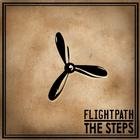
E-portfolio activity #1: Flight Path
It is difficult to get where you want to go if you don’t plan your route… though side trips and tangents can often be some of the richest parts of the journey!

About me
During the past twenty years I have had many positive experiences teaching children and adults in the area of special education. As a Resource Teacher I have provided assessments, adapted and modified curricula, and taught courses to students who have possessed a diverse range of abilities and behaviours. These teaching experiences have sparked my ever-growing interest in supporting teachers and adults through the utilization of technology. In the near future I wish to be employed in a management-level position where I can use my knowledge and skills in education and leadership to assist in the design, development, and evaluation of web-based learning programs.
I am presently employed as the District Principal of Student Support Services in the Nanaimo-Ladysmith School District. In this position I am responsible for the direct supervision of 55 district staff which includes school psychologists, speech and language pathologists, counsellors, child, youth and family support workers, and district specialist staff. I initiate district-wide change and leadership in the delivery of services for students who learn differently and I respond to the needs of staff, parents and inquiries from partner groups and the media. I am very pleased to have found this MET program as I believe this is the program in which I can further my studies and focus on my future goals.
My Experience
Recently I have been employed by Vancouver Island University as a sessional instructor. I have taught courses in the Faculty of Health and Human Services in the Community Support Worker Program. In my course on learning strategies I taught future Education Assistants through the use of wikis and moodle and also about the many technologies that they can utilize in their work with students. I have worked in the private sector with adult students who have sustained traumatic brain injury (TBI) and others with various learning difficulties. I have developed skills in providing cognitive retraining and vocational assessments, and I have facilitated numerous workshops for teaching and support personnel. Through my work with adolescents in the public school system and adults in the private sector, I have gained a well-rounded understanding of how individuals learn and I have developed a keen interest in the utilization of technology as a vehicle through which to address learning needs and the provision of educational programs.
My Goals
Since completing an MA in Educational Leadership in Special Education, I have been assisting schools in their move toward a more inclusive service delivery model. I have assisted by facilitating the move toward a shared expertise and the development of an inclusive environment. My goal, through delivering workshops and in-service training on inclusive education, has always been to remain student-focused, identify needs and aptitudes while, at the same time, respecting and showing an appreciation for human diversity. I feel that this Masters degree will provide me with the next set of skills, research direction and technical abilities to guide me in my work.
I wish to deepen my knowledge of educational theory specific to the use of technology and develop the practical skills in all phases of the online learning process inclusive of program planning, instructional design, online facilitation, and program evaluation. My years of work experience has lead me to gain an understanding of employee characteristics and needs and I’m very interested in creating the necessary programs to address those needs. I require the formal education that this program offers in order to make informed decisions about the most effective learning technologies, management strategies, and to be knowledgeable of emergent issues. I require guidance as I endeavour to evaluate current educational technology research and synthesize this learning to enhance my critical thinking and creative problem-solving skills.
In the not too distant future I would like to leave public school administration and secure employment in the field of on-line educational programming for adults and/or become employed in the creation of such training programs required by large corporations.
Things I need to Learn
MOODLE – According to Bates & Poole (2003) both ACTIONS and SECTIONS frameworks apply to this piece of open source program. I would like to master its use for developing courses. MOODLE can work in a number of different settings, decisions can be made at both an institution-wide and instructional levels. It does give equal attention to educational and operational issues. Moodle enables an appropriate mix of different media to be incorporates and it is easily understood, pragmatic and cost effective.
Mahara – I don’t know this program but I need to learn it and become proficient at it.
Communication Tools – The value of online communication tools goes well beyond social interaction. Access to these tools gives students an opportunity to experience learning in multiple ways, to develop a public voice, to make connections with others around the world, and to compare their own ideas with those of their peers. Simple web 2.0 tools like Edmondo is something that I’d like to become good at and utilize it in my work. How does one find enough time to stay in the know about all these wonderful programs? Bates & Pool (2003) reflects this thought in the SECTIONS framework in that the program must be easy to use for both teachers and students.
- Edmodo is a Twitter for Education (Doriano “Paisano” Carter, Mashable, September 2008.) Edmodo is a microblogging application that allows teachers to communicate with groups of students anytime.
Learning Management Systems – My main question is “Are the open source Learning Management Systems as effective as the commercial ones?” Apparently Sakai, as an open source LMS meets the quality of Blackboard and WebCT in majority of features (Ganjalizadeh & Molina, 2006) .
